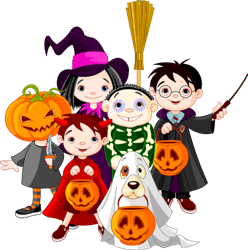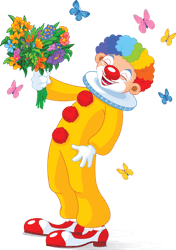Comma Punctuation
Rules and Examples
 In
this lesson, we are going to learn the rules of comma punctuation ( , )
in
the English language.
In
this lesson, we are going to learn the rules of comma punctuation ( , )
in
the English language.Click Here for Step-by-Step Rules, Stories and Exercises to Practice All English Tenses
Commas are used in many ways when writing in English.
The following rules will help you begin to use commas correctly when writing in English.
1. When listing items in a sentence, use comma punctuation to separate words or phrases of three or more.
Note: most American non-journalistic writers use a comma to separate the final item in the series, but some do not.It can be a style matter. But whatever style you choose, make sure you are consistent!
Option B is more common and sometimes clearer to the reader.
Option A: The colors in my bedroom are blue, green and yellow.
Option B: The colors in my bedroom are blue, green, and yellow.
Option A: On our farm we have three cats, two goats, one cow and a pig.
Option B: On our farm we have three cats, two goats, one cow, and a pig.
Option A: Flour, sugar, butter and milk are what you need to buy.
Option B: Flour, sugar, butter, and milk are what you need to buy.
Option A: My best friends are Richard, Nick, Beth and Lisa.
Option B: My best
friends are Richard, Nick, Beth,
and Lisa.


2. Use a comma to separate two adjectives if you can reverse the order of the adjectives or insert "and" between the adjectives.
An adjective is a describing word such as big, small, yellow and soft.Examples:
- He is a little, short man.
We would use a comma here because we can say:
The man is little and short.
We can also reverse the order of the two adjectives in the sentence:
He is a short, little man.
- I have a small, white cat.
We need a comma here because we can say:
The cat is small and white.
We can also reverse the order of the two adjectives in the sentence:
I have a white, small cat.
- It was a cold winter night.
We do not need a comma here because we would not say:
It was a cold and winter night or The night was cold and winter!
It does not make sense to reverse the order of the words:
It was a winter cold night.
- We went to a fun summer party.
We do not need a comma here because we would not say:
We went to a fun and summer party or The party is fun and summer!
It does not make sense to reverse the order of the words:
We went to a summer fun party.

3. When we use an -ly adjective we insert a comma to separate it from other adjectives.
By "-ly word" we mean a word ending with -ly. For example: quickly, lovely.Some of the words ending with -ly are adjectives, but most are not.
Some adjectives ending with -ly:
- She is a lovely lady.
- This is a smelly fish.
- Today is a holy day.
- He has a friendly smile.
- This game is silly.
- The cat left quickly.
- Sharon explains clearly.
- The kids jumped happily.
- They exercise regularly.
- Naturally, we all agreed.
- Oddly, he did not come.
Examples:
- She has a lovely,
black horse.
Lovely horse sounds correct, so we need a comma.
- We walked the dog for a friendly,
elderly
lady.
Friendly lady and elderly lady sound correct, so we need a comma between them.
- I like to read in a brightly
lit room.
In this sentence we do not need a comma because brightly is not an adjective. Brightly room does not make sense.

4. When writing a date in a sentence:
-
Use a comma to separate the day from the year.
-
Use a comma after the year to separate it from the rest of the sentence.
This rule only applies when the date is written in this format:
Month Day, Year
- He was born on March 17th, 1981.
- School will begin August 25, 2013, at 8:15 a.m.
Do not use a comma if the day or year is left out.
Examples:- He was born in March 1981.
- School will begin on August 25.

5. When writing a location in a sentence, we use commas to separate the
city from the state.
A) Use a comma after the state if you spell out the
name of the state. Examples:
- I am traveling to Austin, Texas,
to visit my sister.
- She was born in San Diego, California,
in 1980.
B) Do not use a comma after the state if you use the two letter abbreviated (shortened) version of the state.
Examples:
- I am traveling to Austin, TX
to visit my sister.
- She was born in San Diego, CA
in 1980.
C) Do not use any commas around the state when addressing an envelope to be mailed at the post office.
Example:
- 2307 North Main Street
Austin TX 97532

6. Use commas when you write a sentence that directly
addresses someone.
This is called a direct
address and is used in writing when one person speaks
directly to another person by using their name or title.Examples:
- Yes, teacher, I will finish my work.
- Will you, Bill, show me how to do the mathematics problem?
- Do you like horses, Joe?
- I was wondering, Mr. Jones, if you would like to come to my
house next week.
-
No, mother, I did not pick up all my toys.

7. We also use commas around degrees or titles with names.
Examples:- John Smith, M.D.
(= Doctor of Medicine)
- Sally Ford, Ph.D.
(= Doctor of Philosophy)
Commas are no longer used with Jr. (Junior) or Sr. (Senior) or II, III, IV and so on.
Examples:
- Dan Jones III
- Fred Meeker Jr.
- William Scott Sr.
8. Use a comma to set apart an introductory word such as Yes, No, Well,
Finally, Then, and Now.
An introductory word is a word that is used to begin a sentence but has
nothing in common with the rest of the sentence.Examples:
- Yes, I would love to go to the park today!
- Well, I never thought I would see a tiger.
- Now, it is time to start the movie.
- Then, it will be time to wash the dishes.
- Finally, I am finished with my homework!
- No, she does not like lizards.

9. Use a comma with an introductory phrase to set it apart from the main sentence.
Introductory phrases are not complete clauses and are used to introduce the main part of the sentence.If the phrase is three words or less, the comma is optional.
Examples:
- On December 25, many families will celebrate Christmas in
America.
Or
- On December 25 many families will celebrate Christmas in
America.
- In about two weeks, I will finally be 18 years old.
-
To prepare for the competition, Tim surfed every day.

10. Use a comma with a coordinating conjunction (for, and, nor, but, or, yet, so) to connect two independent clauses in a compound sentence.
An independent clause is a complete thought and complete sentence with a subject and a verb.Independent Clause + , +
Coordinating
Conjunction +
Independent Clause
Examples:- My
little brother likes candy, so
I
bought him a lollipop.
- The
dog chased the cat, but
the
cat ran up a tree.
- Sarah
wants to go to the theater, and
Sandy
wants to go to the zoo.
- She likes
flowers, so
he
bought her a bouquet.

11. When writing a quote, we use commas to set apart the quotation.
Examples:- My mom said, "Be nice to your sister."
- "Please take good care of yourself," said the doctor.
- "You can vote for a president this Tuesday," the man
instructed.
- "John," my father asked,
"could you please take the dog outside?"

12. When writing a Tag Question, use a comma to separate the statement from the question.
Examples:- You like horses, don't you?
- His name is Bill, isn't it?
- This Sunday is your birthday, correct?
- That is a clown, right?

13. Use commas around a description of someone or something in a sentence that has already been identified.
Only use a comma if you can remove the description and not change the meaning of the sentence.Examples:
- Mr. Johnson, my math teacher, told us to study for the test
tonight.
This would be clear too: Mr. Johnson told us to study for the test tonight.
- Mrs. James, the dentist, was at the grocery store.
This would be clear too: Mrs. James was a the grocery store.
- My green bike, which has a flat tire, is parked in the
garage.
This would be clear too: My green bike is parked in the garage.
- The team that won the competition
will receive a trophy.
We do not need commas around the description in this sentence because we cannot take out the phrase that won the competition without changing the meaning of the sentence.
The team will receive a trophy does not tell us which team is receiving the trophy. The original sentence says that only the winning team will receive a trophy.
- The
students who
failed the test must stay after school.
We do not need commas in this sentence because we cannot take out the phrase who failed the test without changing the meaning of the sentence.
The students must stay after school would mean that ALL students must stay after school.

For example, in this sentence:
The students who failed the test must stay after school.
The underlined phrase is an appositive.
Click here to learn more about English Appositives.
14. When you have two contrasting (opposite) phrases, use a comma to
separate the phrases.
Examples:- That ball is mine, not yours.
- The puppy is cute, but messy.
- I am very tired, but still awake.
- The alligator is cute, but dangerous.

15. When writing letters, use a comma after the greeting of a friendly letter and the closing in all letters.
Examples of greetings:- Dear John,
- Dearest Mother,
- Dear Mr. and Mrs. Smith,
- Greetings,
- Sincerely,
- Your loving children,
- Your friend,
- Yours truly,
- With love,
- Love,

Comma punctuation – caution:
As you can see, there are many ways to use commas in the English language, and we have not listed them all.The biggest problem with commas is overuse. Try not to use a comma unless you can find a specific rule telling you to do so.
One common error in comma punctuation is the comma splice. Click here to learn more about comma splices and how to correct them.

These were the uses of comma punctuation. Now that you know them, it is time to practice! Read and do exercises.
Get Updates, Special Offers, and English Resources
Download your FREE GIFT (the first two chapters of
English Short Stories Book and Workbook)
as soon as you join!

By submitting your email, you consent to receiving updates and newsletters from us and to the sharing of your personal data with third parties for the purposes of sending you communications. We will not spam you. You can unsubscribe at any time. For more information, please see our privacy policy.








